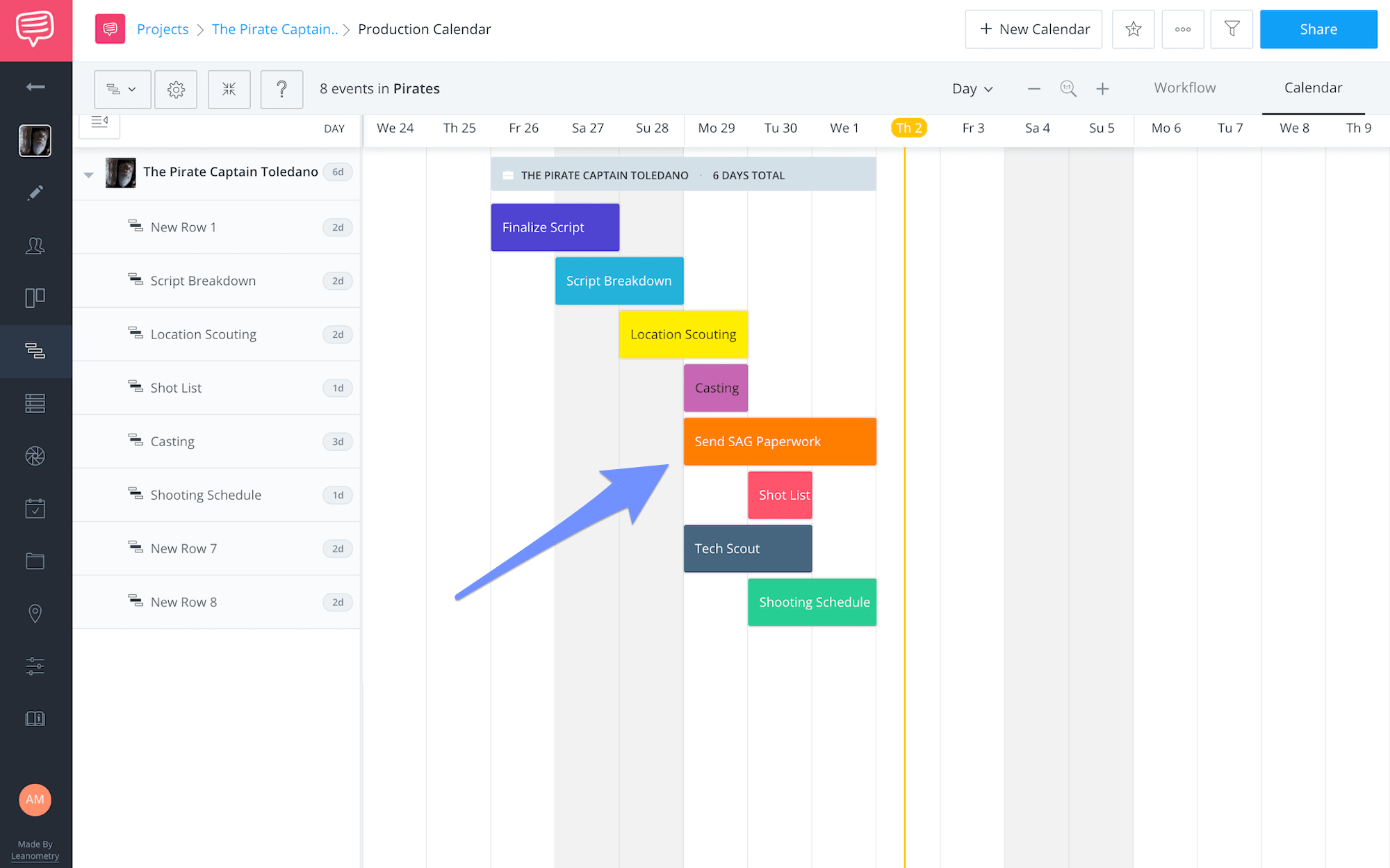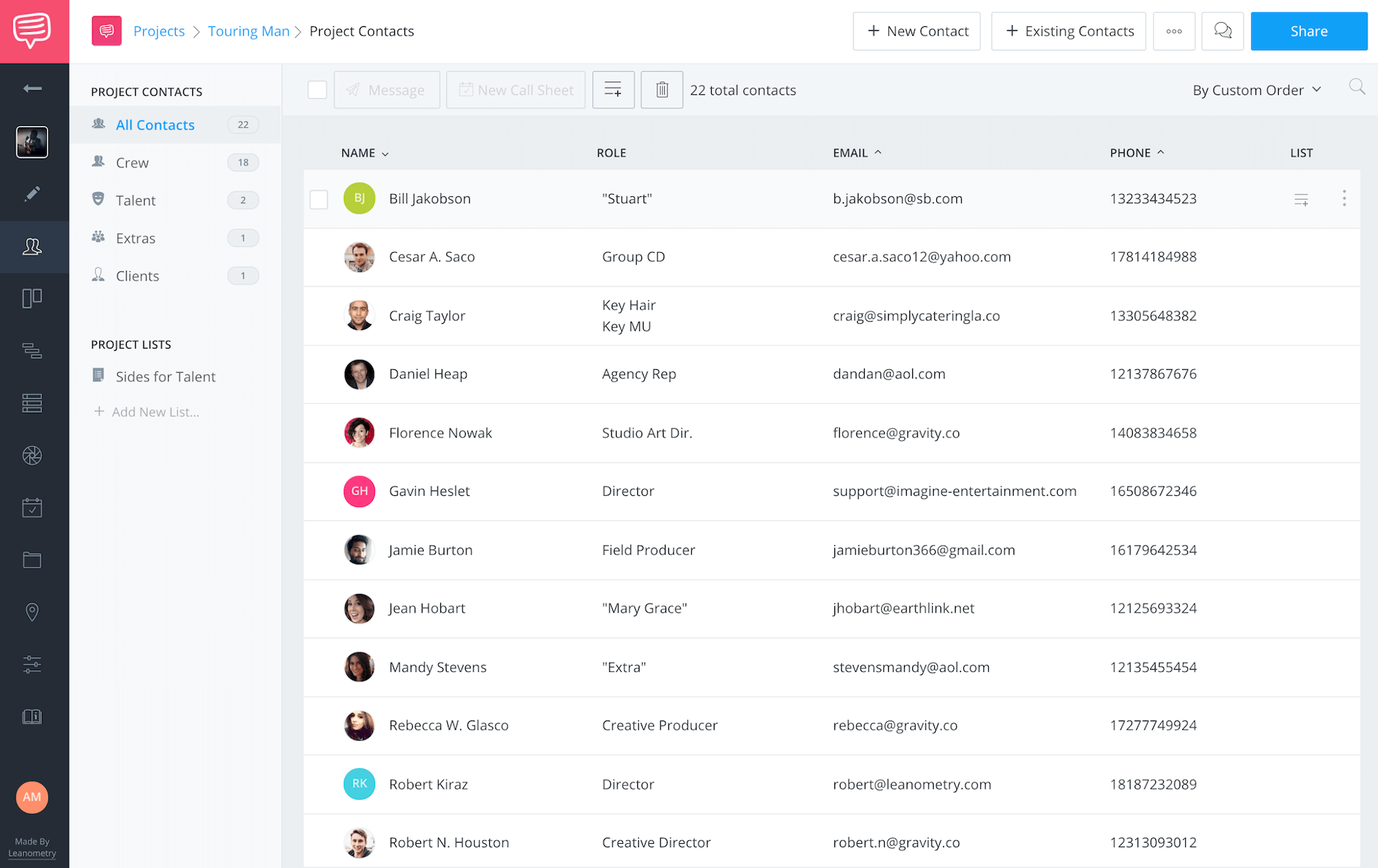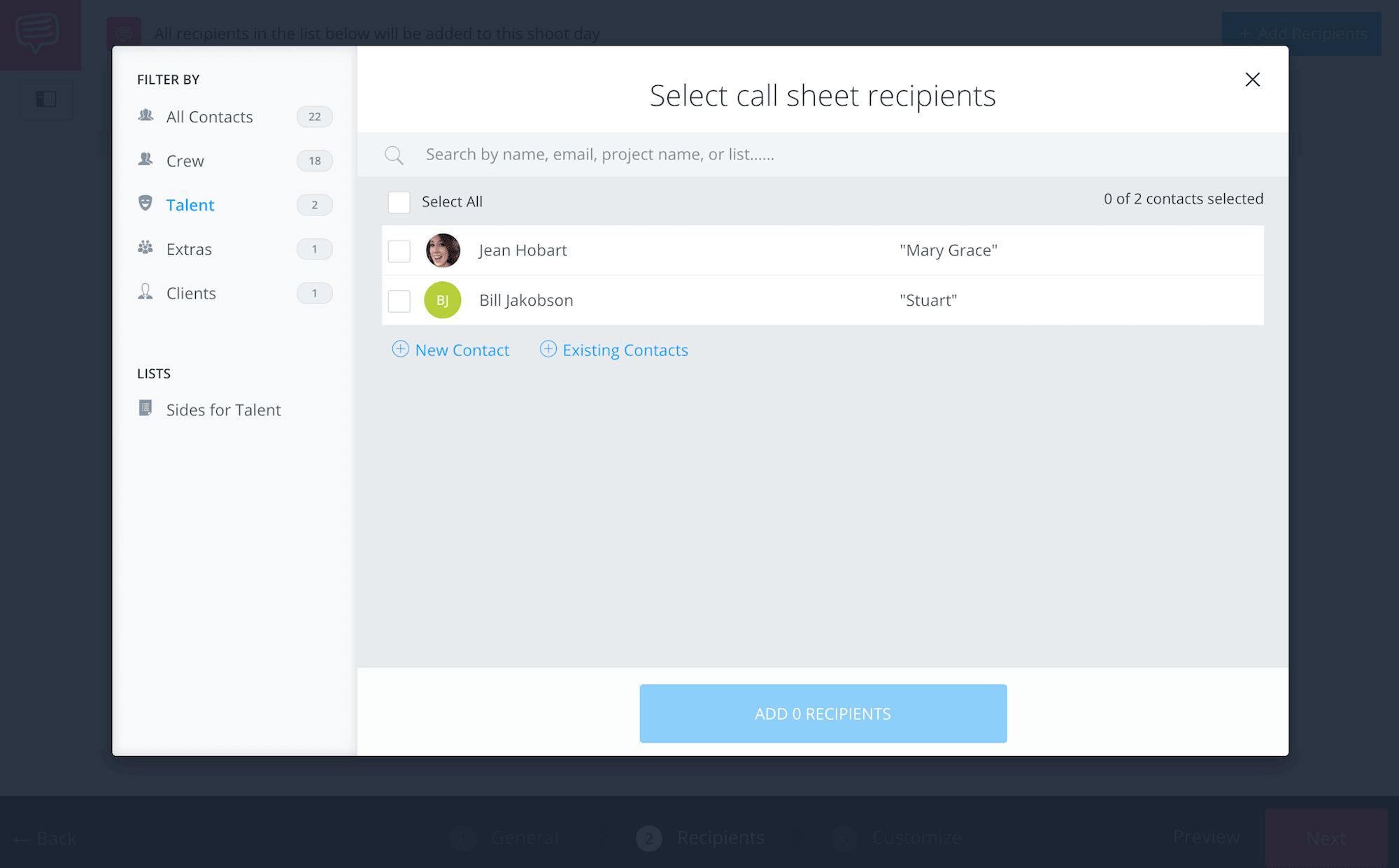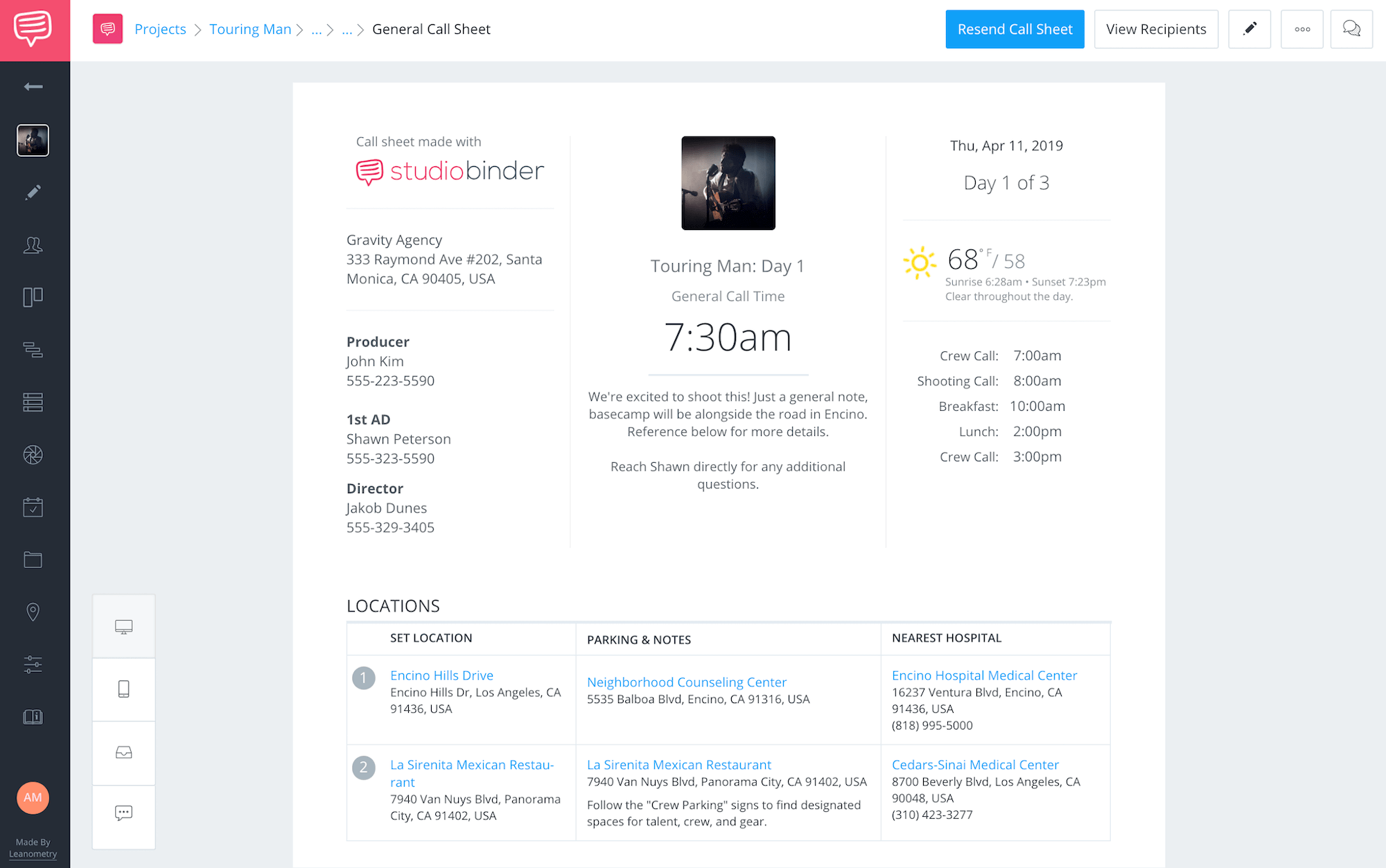C
asting an independent film can be a lesson in the old adage, “You may love filmmaking, but it doesn’t love you back.” You want top talent in your film, but you often don’t have the money or the professional clout to attract them. Many filmmakers take the path of least resistance and end up getting an audience to match. But indie film casting isn’t as hard as one might think.
If you want to know how to cast actors for a short film, you need to understand the proper channels and etiquette. In today’s post, we’ll examine the casting process and highlight strategies for every film.
Table of Contents
Everything you need to know about line producers.
1
The Fundamentals of Casting
For Independent FIlms
1.1 What's Your Budget?
Knowing your budget is half the battle
To know how to cast actors for a short film on a budget, you must start with an overall strategy. This involves getting your concept, budget, funding and release plan set in stone.
Regardless of whether or not you have the money in-hand, you should develop a clear picture of how much your short film will cost.
With that information, you can scale your movie casting process to your budget.
Here are some indie film casting-specific questions to ask when analyzing or building out your budget:
- Is your cast being paid? Where possible, the answer should be “yes!”
- Is your film a union production?
- Can you afford a “more notable” actor to draw attention to the film or to reach your intended audience?
- Can you set aside money for auditions?
- Can you set aside money for a casting director?
Make budget your bedrock as you approach all of your pre production research.1.2 WHAT’S YOUR STORY?
Know your film’s purpose
This goes back to when you first identified your short film idea. What was your goal or purpose for this short film?
You might want your short film to be a festival darling. Or maybe be a viral hit. Know that your movie casting process will vary depending on your intentions.
Build your target market into your pre production research. Who is the audience that you want to reach and satisfy?
A friend of mine recently produced a sci-fi short, intending for it to travel the sci-fi festival and conference circuit. Since he knew his audience was comprised of sci-fi fans, he cast an actor from Star Trek in one of the roles.
This actor might be too obscure to draw a general audience, but he’s a bona fide celebrity on the sci-fi circuit. This short film is premiering at a sci-fi festival in Austin this month!
Before you proceed with your movie casting process, make sure you have a clear picture of your film’s purpose or goal.
2
Casting Your Project
When You're Ready to Begin
2.1 UNION STATUS
To cast union or non-union?
For many filmmakers who face the union/non-union casting question for the first time, the choice seems intimidating. But it doesn’t have to be!
AFTRA/SAG is one of the most proactive unions when it comes to working with smaller productions. They even have a website devoted to supporting indie productions.
Can I Afford a SAG Short Film?
To many filmmakers’ surprise, the short answer is probably yes!
Both the SAG Short Film Agreement and the SAG New Media agreement are fairly open-ended when it comes to actor pay.
The SAG Short Film Agreement requires that actors be paid, but allows the payment to be completely deferred until after the film is released (and “released” does not refer to film festival screenings or release on the internet).
Knowing how to find actors for free is not always about skirting unions. The SAG New Media Agreement is entirely negotiable.
This means that if your actors agree to work for free, the union allows it.
Of course, there are budgetary limitations. If your budget is very high, the union (and good business ethics) will require that your actors be paid.
SAG provides a ton of useful information when trying to cast, see below:
If you’re setting up a SAG production, even with volunteer actors, build their union expenses into your pre production research.
UNION CONSIDERATIONS
WORKING WITH THE SCREEN ACTORS GUILD
- The union requires you to have liability insurance and workers comp insurance. It's a legal requirement, too. I’ve found that the union doesn’t often check on this, but I DO NOT RECOMMEND skimping on insurance!
- Both the SAG Short Film Agreement and the SAG New Media Agreement require you to pay overtime at full rates. You have to do this regardless of whether or not your actors agreed to work for free, or for a lower day rate. Avoid overtime, or be prepared to pay a premium!
- If there is a stunt or pyrotechnics in your script, SAG will require you to hire a stunt coordinator at full cost. Stunt coordinators in the union cannot waive their fee. This is an important safety measure.
If you are paying your actors, even if it’s below SAG’s typical rates, you will be required to pay their payroll taxes which vary by state.
You’ll also need to cover pension and healthcare as well (17% as of this writing). Consider hiring an accountant to do this if you can afford one. It can get complicated.
With a decent budget and no special circumstances requiring additional fees, it’s possible to upgrade to a SAG cast. This will cost only a few hundred dollars in taxes, P&H and possibly some accounting fees.
2.2 SHORT FILM OR NEW MEDIA
Know where you’re going
The union rules about this are fairly straightforward, and they have to do with where the first public screening of the film will take place.
If you’re creating a short that will screen publicly before an online release, you should go with the SAG Short Film Agreement.
If your initial release is online, the New Media Agreement should work for you.
DID YOU KNOW?
SAG contracts like the Short Form Agreement was made for actors to produce their own independent projects. New Media Contracts are intended for experimental projects that are the lifeblood of the web/internet based audio-visual content.
With my short, “The Pirate Captain Toledano”, we ran into a complication with SAG. I initially filed for the short film agreement. But because I offered an “advance online screening” of the film to crowdfunding supporters, the union suggested I re-categorize as a New Media production.
I was fine with that. But when I filed the paperwork we were too close to production! SAG will not process paperwork that is submitted within two weeks of a production start date! So SAG refused to process my New Media paperwork for this reason.
This is an example of why it is important to use a production calendar in the earliest days of development and pre-production. A one stop shop for planning, content creation, communication and distribution, like StudioBinder, is ideal.
In fact, I would recommend using a from beginning to end of the film production process. Take a look:
Organize all the information you need to get your film made in one place so it is easy to share with members of your creative and production teams.
2.3 STUNT CASTING
Hiring “name talent” in your film
If you’d like to cast someone a little bit famous in your film, there are a few points to consider.
First, be realistic. You’re more likely to cast a famous friend in your film than an actor who you’ve never met.
But if you’d like to cast someone you’ve never met, consider going through a friend of that actor. Agents, on the other hand, won’t make enough money off of the deal and probably won’t bother with it.
You’re much more likely to get a “working class” actor to appear in your short than a major celebrity. Unless you know them well, don’t bother A-list celebrities.
But the people who play supporting roles on TV shows, or who show up as character actors in movies might be willing to spend a day or two on your short.
It is important to know what you’re offering. A role in a short film is not a ticket to success for someone who already has some success. So, what can you offer a semi-famous actor to entice him or her to play a role in your short film?
Money
If you can spare it, offer more money. $1000 might be ten percent of your budget, but if you can get a well-known performer to spend a day on your set and appear in your film, it might be money well-spent.

We’re told Julia’s brother and Emma’s father will work for “fee”
Role
A chance to play against type: actors often find their initial success by playing a particular ‘type’ very well. This pays the bills and can be rewarding, but it can also be creatively unsatisfying after a while.
Actors can benefit form indie film casting opportunities to play against type. So if the performer you’re hoping to cast is usually typecast as a nice, middle-class hero, offer the role of a nasty villain. If the performer usually plays a sidekick or peripheral character, offer a lead role.
J.K. Simmons usually plays a “good cop”. But director Damien Chazelle cast him as the antagonist in his short film “Whiplash."
That film went to Sundance, and was expanded to a hit feature also with Simmons, who won an Oscar for his performance.

“Whiplash” revealed a new face for JK Simmons
If you can, cast your notable friend in a role that only shoots for a few hours - no more than a day, ideally an easy day. Make it convenient for them - shoot near their house, or provide their transportation.
Don’t try to cast your famous friend just because he or she is famous. If the role isn’t suitable for them, they’ll know, and they’ll feel used.
Give them a chance to excel!
The Offer
Make the offer through reliable, appropriate channels.
Agents and managers will likely not pass along your message - projects with such small pay aren’t worth their time.
Indie film casting directors often have relationships with agents. They might be able to get a message through on the strength of that connection. Occasionally, indie film casting directors know the actor you’re aiming to hire personally. So they might be able to make a direct offer without representation getting involved.
If you know people who know the actor you’re aiming to cast, you can ask if they’d be willing to pass along an offer - but be prepared for your friends to say no. People can be touchy about mixing your business with their social or professional relationships.
Of course, if you know the actor personally, you can make the offer directly. Do it once, leave lots of room to back out, and don’t be offended if you get a “no”. Your professional relationships are more important than your individual projects - don’t sacrifice them just to get a short film made!
If you are able to land a recognizable TV or movie actor, remember that he or she may have gotten used to the relative comforts of a studio production. By this we mean craft services to dream about.
Of course, you should try to keep everyone comfortable!
But there are things that a new actor might find tolerable, that a veteran might find terribly upsetting.
PLEASING TALENT ON SET
WHAT TO LOOK OUT FOR WITH NAME TALENT?
- Make sure the craft services are diverse and well-stocked.
- Make sure everyone has a place to sit (folding chairs are enough, as long as there are enough of them).
- Where possible, try to provide a quiet space away from the set where your actors can run lines or relax when their scene isn’t being shot.
- Schedule your actors so they spend as little time as possible ‘waiting around’ for their scene. If you don’t plan on shooting with your ‘celebrity’ until after lunch, don’t have them show up at six in the morning.
Plan accordingly when you are composing your call sheets for your shoot. Here are some things to think about:
Remember, the busier your talent is when they get to set the less likely they will have a chance to gripe over lackluster craft services or even a late lunch.
We'll talk more on call sheets later in the post.
2.4 CASTING DIRECTORS
Work with an indie film casting director
Good indie casting directors know how to cast actors for a short film. And working with them can ease your pre-production research process - if you can afford it!
Indie film casting directors who work on shorts can charge anywhere from a few hundred to a few thousand dollars. They are experts at assessing your casting needs and finding just the right talent for you.
Indie film casting directors can help you secure higher-level talent than you might have access to on your own. They also run the casting process, which can save you a lot of time.
Most shorts don’t have the luxury of working with casting directors. I’ve used them for projects with very specific or challenging indie film casting needs. One such example is Mad Mentsch, a Jewish “Mad Men” parody that I produced and directed several years ago.
We had to find actors who could convincingly play “Jewish versions” of characters from the popular TV show. Since it was such a specific casting job, we worked with an indie film casting team to help find just the right actors.
Mad Mentsch went on to see some success and notoriety as a front page news story in the Wall Street Journal.
3
Indie Film Casting Calls
A Net for Actors
3.1 CASTING NOTICE
Now, find actors for your short film
Write your casting notices carefully. They need to attract the best talent to your projects, while simultaneously weeding out actors who aren’t a good fit.
To attract the best talent, make your casting call sound as competent and professional as possible.
The Project
Describe the project and the role in 1-2 sentences. Focus on what makes the project unique. “Casting for a short film” doesn’t excite anyone.
“Casting for a short film about Jewish pirates” catches people’s attention.
Mention if the gig is a union or non-union gig. If it’s a union gig, mention if you’re willing to accept non-union submissions.
DID YOU KNOW?
You can include non-union cast members in both SAG New Media and the SAG Short Film Agreements. However, they do not necessarily become SAG eligible as The Screen Actors Guild no longer provides or processes Taft-Hartley reports for programs signed to an independent New Media Agreement that allows for deferred payment.
Next, make the shooting region clear. If you’re going to film in Las Vegas, you only want to cast people who are willing to go to Vegas for production, or who already live in the area. This is particularly important for casting websites that have a national reach.
List the approximate shoot dates. You don’t want to go through the casting process only to find out that your favorite actors are unavailable.
State if the project is paid, deferred or unpaid.
The Role
Describe the role that you’re casting with a hint of what makes it unique or unusual. Specify what you’re looking for and provide information that might weed out people who aren’t available or uninterested.
When you describe the role, include more defining characteristics of the character. You can include age, range, gender, “type,” sometimes race or ethnicity if necessary.
If special skills are required, such as speaking a foreign language, or juggling, or stunt work, list them.
The Pedigree
If you have people involved in the project with impressive qualifications, mention those qualifications (but don’t mention names).
For example, suppose you convinced an Oscar-winning costume designer to design your costumes. Mention that in the casting call. People want to work with talented and successful collaborators.
With this information, your casting notice might look like this:
CASTING NOTICE EXAMPLE
What does a casting notice look like?
Casting: “Rocket Scientist” type for a dramatic sci-fi short film with an award-winning director.
Seeking: Male, middle-aged, bookish and frenetic, comfortable with an Eastern European accent.
SAG Short Film Agreement, deferred pay, shooting in Greater Los Angeles for 2-3 days in mid-March.
What does a casting notice do?
- List the specifics of the role being offered
- Tells the logistics of the production
- Informs about the production team
Get the most important info out first, and keep it short and sweet.
3.2 CASTING WEBSITES
Use the internet to cast for a short film
There are dozens of casting websites out there. Some of them can only be accessed by casting directors. Others are a free-for-all of indie productions trying to find their stars.
Some casting websites charge actors to submit. Others charge productions to post casting calls.
Some sites that aren’t specific to indie film casting are free to use. However, there’s no vetting process so you’re likely to get a higher volume of junk submissions.
I recommend using one casting website. That way you’ll have all of your casting info in one central location and save time.
Whatever website you use, make sure your casting calls are written effectively so you get the best applicants, and weed out those who won’t fit your film.
3.3 AUDITIONS
Where to hold indie film auditions
Once you review the headshots and resumes that have arrived in response to your casting call, it’s time to hold auditions!
Even though they’re indie film auditions, don’t host in a private home.
I’ll repeat this: don’t hold indie film auditions in a private home!
Even for student film casting calls, this is unprofessional and creepy.
In big production centers like New York or LA, you might find free or low-cost audition spaces that you could use. Hollywood Casting and Film is a popular free audition space here in LA.
If you don’t want to utilize one of these spaces, consider any alternative that might be available to you. I’ve held indie film auditions in library meeting rooms, friends’ offices, rent-by-the-hour boardrooms, and even in a public park.
Ideally, your audition space will have a waiting area where actors can sign in and review the “sides” for the audition. You should also have a separate, private space where you can hold the auditions and, preferably, tape them.
If there’s absolutely no way for you to secure an appropriate audition space, have your actors self-tape their auditions and send them to you online.
3.4 SELF TAPE
Let your talent film their auditions
Self-taping has become common in indie film auditions, which often lack a formal audition space. They’re also good if you’re casting a wide net for your actors, and have interested talent in far away places.
All you have to do is ask your actors to tape themselves performing the sides, or a page or two of material that you send to them. It’s like a regular audition, but they can record it with their phone and send it to you online.
By the way, creating sides is no longer the real headache it used to be when using the the industry-standard process. It used to require cutting down PDFs of the screenplay to have only the scene needed for the audition.
After that, PDFs had to be labeled with additional details like the character’s name. There would be leftover lines and pages from other scenes. So you’d need to X them out by drawing lines over the content, like this:
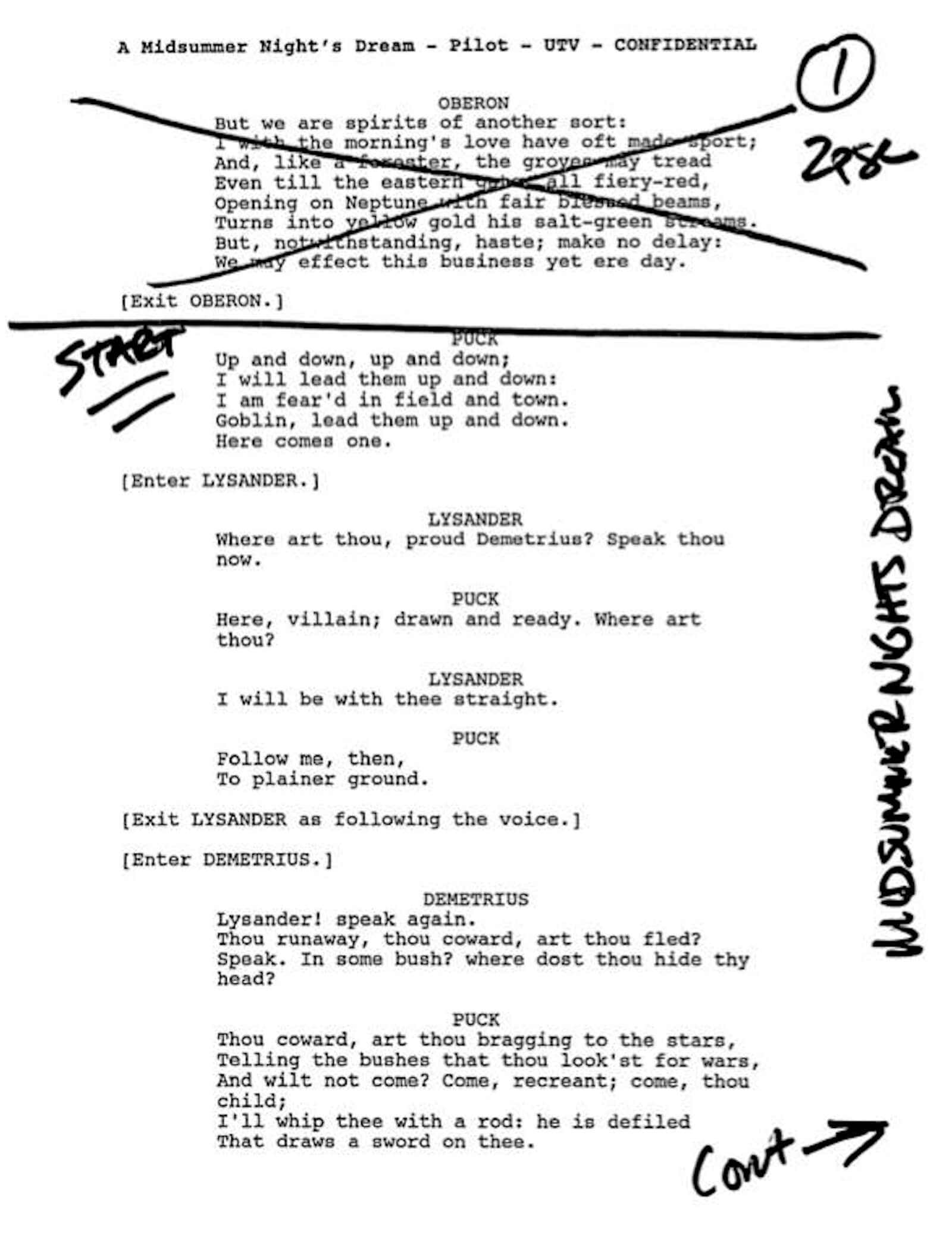
Sides don't have to be messy like this
Then came printing. After printing came copying. After copying came collating... distributing… checking to see if they’d been received...
Now those days are gone. Now, just create custom script sides with a swipe of a mouse. Like so:
If you’re using a higher-end casting website, it may provide your submitters with the ability to upload their self-taped auditions. Otherwise, most will upload their audition to a private link on YouTube or behind a password on Vimeo and email the link to you.
Be prepared to walk some actors through this process, especially older actors who have a harder time adapting to new technology.
Related Posts
3.5 CAST LIST
Once you have found the cast
Once you’ve weeded through all of your submissions and reviewed the auditions, it’s time to make your final casting decisions.
I usually make a list of my top-two or top-three candidates for each role before I start making offers. If an actor turns down a role, I like being able to jump immediately to the next option on my list.
If you can, use the opportunity to get your actors’ availability for a table read or a first rehearsal.
Once you lock your cast, you need to find a good way to streamline your communications. A good place to start is to make a list of everyone’s contact information.
However, my preferred method is to use a film project management software like StudioBinder to manage all of my communications. That way I can group my actors, and the rest of my crew, in one place.
Another cool thing here is that my contacts are integrated into my other production processes.
So when I send a call sheet, for example, I can delimit the groups I address.
StudioBinder's call sheets can be easily sent and tracked with mobile RSVP's.
Keeping a handle on communications is key. You want to organize your communications processes as much as possible.
Don’t be intimidated by the indie film casting process. Remember, your available roles are valuable opportunities for actors to show their stuff.
You just need to go through the proper channels and stick to the rules of running a professional production.
For further preparation, explore the ins and outs of running an audition to get the most out of your casting process.
Once your cast is in place, you’ll be ready to roll into the final stages of pre-production.
Break a Lens!
RELATED POSTS
UP NEXT
Casting tips for directors and producers
Indie film casting is important and it isn’t enough just to get an overview of the process. Continue your education in casting with a bit of insider knowledge. Keep reading to get insider tips on the process.

